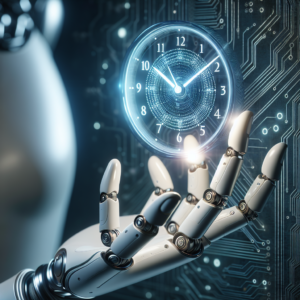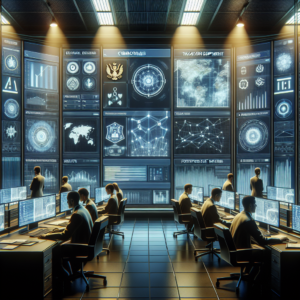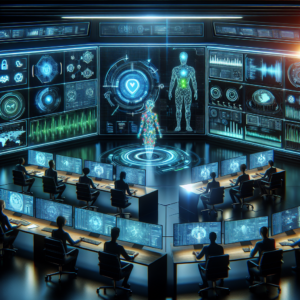Introduction to China’s Space Exploration Endeavors
As we embark on a new year filled with promise and advancement, the Chinese space program has taken significant steps in enhancing its capabilities and pioneering future missions. In a remarkable demonstration of innovation, astronauts aboard the Tiangong space station are engaging in a series of groundbreaking experiments involving artificial intelligence (AI) robots. This initiative marks the beginning of what is anticipated to be a busy year for Chinese human spaceflight.
The Tiangong Space Station: A Marvel of Modern Engineering
The Tiangong space station, China’s flagship space program, is a symbol of the nation’s growing prowess in space exploration. Launched in 2021, this modular space station is designed to host a variety of scientific experiments and technological demonstrations, showcasing China’s commitment to advancing human presence in low Earth orbit.
Components of the Tiangong Space Station
The Tiangong space station consists of several critical components:
1. Core Module (Tianhe): This is the heart of the station, providing living quarters for astronauts and hosting essential systems.
2. Experiment Modules (Wentian and Mengtian): These modules are designed for various scientific experiments and can be used for a range of research activities.
3. Robotic Arm: The advanced robotic arm is crucial for assembling the station in orbit and conducting maintenance tasks.
With a focus on sustainability and scientific exploration, Tiangong is set to host a variety of international collaborations, solidifying its place as a cornerstone of contemporary space research.
AI Robots: The Future of Space Exploration
In an exciting leap forward, the Tiangong astronauts are experimenting with AI robots to enhance their operations within the space station. The integration of AI into space exploration heralds a new era of efficiency and innovation.
Capabilities of AI Robots
The AI robots being tested aboard the Tiangong space station are equipped with a range of functionalities:
– Automation of Routine Tasks: AI robots can handle mundane and repetitive tasks, allowing astronauts to focus on more complex scientific experiments and decision-making.
– Real-time Data Processing: The robots can analyze data on the spot, providing astronauts with critical insights and enhancing mission efficiency.
– Enhanced Safety: With AI, the potential for human error is reduced, allowing for safer working conditions in the challenging environment of space.
These robots represent a significant advancement in how astronauts work and interact with their environment, further pushing the boundaries of what is possible in space.
Significance of the Experiments
The ongoing experiments aboard the Tiangong space station are not just routine activities; they have far-reaching implications for the future of space exploration. The integration of AI technology is paving the way for more autonomous missions that require less human intervention, which is particularly essential for long-duration flights to destinations such as Mars.
Enhancing Scientific Research
The experiments being conducted with AI robots will lead to enhanced scientific research capabilities. By automating data collection and analysis, astronauts can dedicate more time to critical thinking and complex problem-solving, essential components of any scientific endeavor.
International Collaboration and Research
China’s commitment to creating a collaborative international space community is evident in its willingness to share findings and work with other nations. The experiments taking place on Tiangong hold the potential to contribute to a global understanding of space science and technology.
The Road Ahead: A Busy Year for Chinese Human Spaceflight
2023 is shaping up to be a pivotal year for China’s human spaceflight program. With several missions planned, the momentum built around the Tiangong space station is set to carry over into upcoming projects.
Planned Missions
Several key missions are slated for the year, focusing on various objectives including:
– Increasing the Crew Size: Future missions will aim to increase the number of astronauts aboard Tiangong, facilitating more extensive research and operations.
– Expanding Research Capabilities: Additional experiments will be conducted in fields such as biology, materials science, and astronomy, broadening the scope of research conducted in orbit.
– International Collaborations: China is expected to engage with international partners to share knowledge and resources, potentially leading to groundbreaking discoveries.
Conclusion
As the Tiangong astronauts engage with AI robots and other innovative technologies, they are at the forefront of a transformative era in space exploration. The integration of advanced robotics into human spaceflight not only enhances operational efficiency but also opens up new avenues for scientific research and international collaboration. With a busy year ahead, China’s commitment to pushing the boundaries of space exploration promises to yield exciting developments that will be closely watched by the global community. The future of space is bright, and China is determined to play a leading role in shaping it.



